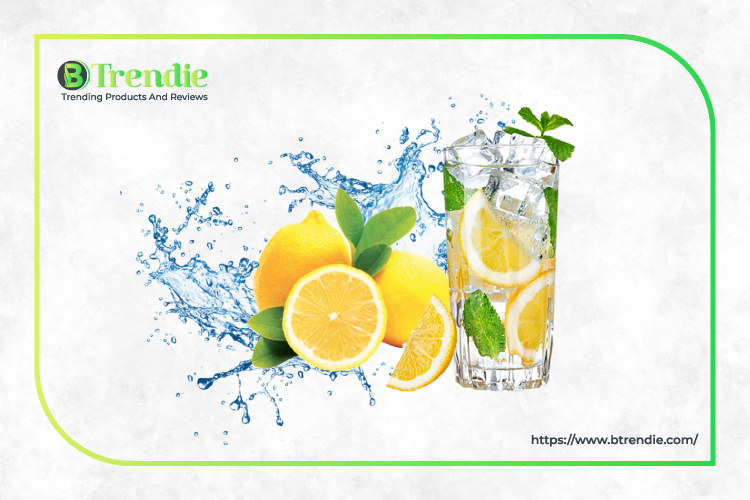Alkalinity is the quantitative measurement of a liquid solution’s ability to neutralize an acidic substance. In alkaline water, “alkaline” refers to the water’s pH level. The pH level or the “power of hydrogen” on a scale, is the measurement of how basic or acidic a liquid solution is. For instance, a very acidic liquid solution has a pH level of 1, and a very alkaline or basic liquid solution has a pH level of 13.
Compared to regular drinking water, alkaline water contains a pH level higher than normal water. Normal drinking water, in general, has a pH level of 7 which is on the neutral level while alkaline water has an 8 or 9. Therefore it is believed that it can neutralize acidity in the body.
There are different ways to make water alkaline. Some involve the use of easy-to-find ingredients you can get in your fridge, at home, and in stores. You can also buy alkaline kits and devices with alkaline water filter systems from grocery stores. Other methods, however, require a longer waiting period before you can affirm that the water is alkalized.
Choose the Type of Water to Alkalize
First, you must decide what type of water you will use to make alkaline water – filtered, bottled, or tap water. After that, depending on how much time and money you are willing to spend to alkalize the water, you can choose what method to use in the alkalization process.
Test the pH Level of the Water
Before starting off with any of the following methods, remember to check the pH level of your water first. The easiest way to know is by using pH strips. The pH strip is a piece of paper to be submerged in the water to determine its alkaline level. These can be bought in various stores and are usually found in the section where pool cleaning and equipment products are.
If you have more spare time, you can make your own do-it-yourself pH strips with cabbage and process it with a blender, a microwave, and a filter paper or coffee filter. To do this, you need first to cut a red cabbage into smaller pieces and then process it in the blender until it produces a little amount of water or juice.
Next, boil or steam the cabbage and its juice in a microwave. On the steamed or boiled juice, dip the filter paper or coffee filter until thoroughly soaked and dark. After drying the filters cut them into small paper strips. To test if the strips are done correctly, soak them in any acidic or alkaline liquid, such as baking soda dissolved in water or vinegar. By testing your home=made pH strips, you can determine what color transition they will have once submerged in an acidic substance.
Remember, we want to push the pH level of the water to 8 to 9 to alkalize it. And for better quality, it is recommended to use filtered or bottled water.
5 Methods to Make Alkaline Water
Here are some easy, tried, and tested ways to make alkaline water.
1. Mix with Baking Soda
One of the easiest ways to make alkaline water is by mixing baking soda with it. Baking soda or sodium carbonate is available in any regular grocery store or online. It also has a pH level of 9, which is exactly the level needed to make water alkaline.
To alkalize water using baking soda, mix half of a teaspoon of it with one gallon of water. Dissolve the baking soda completely by vigorously shaking the mixture. Once completely dissolved, your alkaline water is ready and healthy to drink.
The baking soda itself can do the alkalization, but others suggest baking it first to increase its ability to alkalize the water.
This mixture is also good for indigestion and heartburn relief. However, too much sodium may not be suitable for people with kidney problems, diabetes, and severe health conditions.
2. Add Lemons
Another trick is to add slices of lemons to the water. The acid from the lemon is what makes the water alkaline. This mixture is otherwise known as lemon water.
This method requires a long waiting time to make water alkaline properly. Proportionately, a piece of lemon cut into eight pieces is good enough to alkalize a pitcher of water. No need to squeeze the lemons. Just cover the pitcher of lemon water, and let it rest at room temperature for up to 8 to 12 hours.
And once the waiting time is up, the alkaline water is ready for drinking. The lemon flavor in it also gives it a refreshing taste.
Aside from the benefits of alkaline water that lemon water can give, its potassium also helps in brain nourishment, and its calcium strengthens the bones.
3. Mixing pH Drops
One of the simplest ways to make alkaline water is to mix pH drops into the water, depending on the amount required on the instructions of the bottle. pH drops have highly concentrated alkaline minerals which can alkalize any water type. It is also available in stores.
4. Processing it in a Water Ionizer
Using a water ionizer is one of the convenient ways to make and drink alkaline water at any time you want. The ionizer is usually attached to the sink which can produce both ionized or alkaline water and oxidized or acidic water.
The device makes the process of alkalization of tap water very simple and hassle-free for its users. The ionizer filters the water as it flows through activated charcoal. Then, the water undergoes electrolysis to divide the water’s positive ions and anions substance. Finally, the water comes out of your tap, alkalinized.
5. Processing it in a Reverse Osmosis Water Filter
A reverse Osmosis Water Filter is also a device to make water alkaline, which can be connected to a faucet. This device specifically works by using microscopic filter membranes and osmosis pressure. The filter processes the tap water through its pressure system which makes it alkaline. Its carbon filter cleans and removes the tap water’s color and odor at the same time.
Alkaline water can be made in various ways using different ingredients and devices. Depending on how long you are willing to wait, how much money you are willing to spend, and how convenient you want to make it, you can choose from these different methods. But you must remember that in making water alkaline, do the processes correctly to ensure that the pH level of the water is at 8 to 9. This way, you can experience the maximum health benefits of alkaline water in your body.





